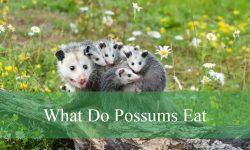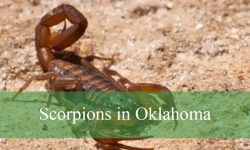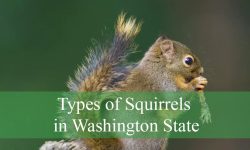Tiny yellow bugs may seem innocuous at first glance, but their presence can have significant implications for gardens, crops, and even indoor environments.
The article below will help you discover 22 types of tiny yellow bugs you can encounter in different habitats and how to identify them.
Different Types of Tiny Yellow Bugs
American Rose Chafer
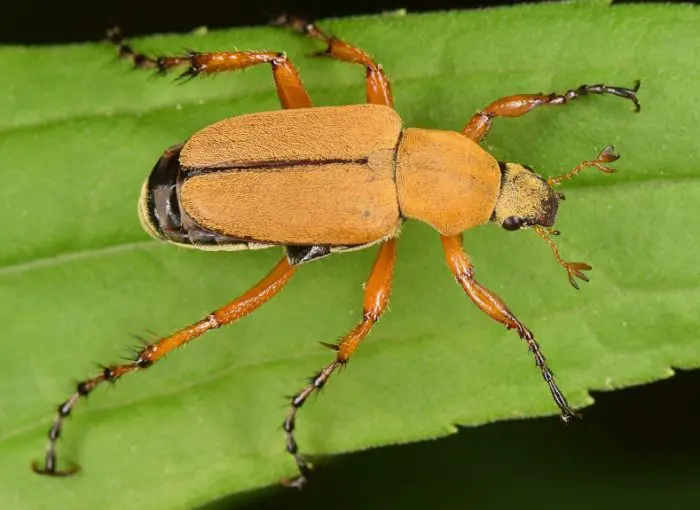
American Rose Chafers (Macrodactylus subspinosus) are typically yellow-tan or yellow-light brown, known for their significant impact on gardens. Primarily feeding on rose leaves and roses, they also target grapes, apples, and other plants. Their feeding behavior, known as skeletonizing, can lead to the death of roses by consuming entire leaves.
These chafers often swarm in large numbers, using their antennae to seek out host plants, ultimately causing varying levels of damage from reduced pollination to plant death.
Yellow Velvet Beetle
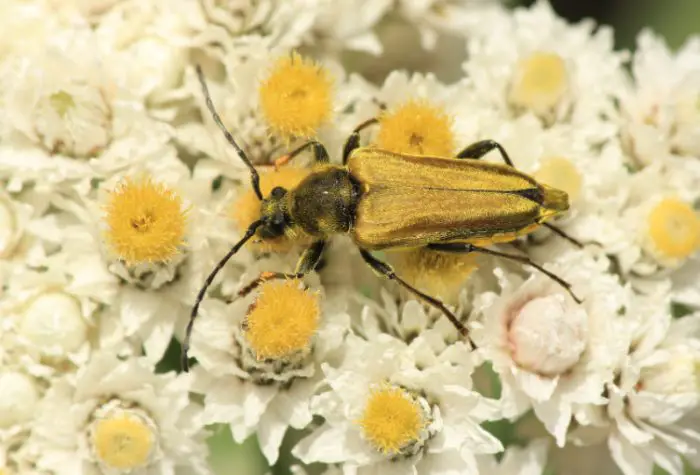
Yellow Velvet Beetles (Lepturobosca chrysocoma), reaching up to 2 inches in size, are common in the US and Canada. Identified by their golden-yellow wings and head, and black legs covered in short yellow hair, they significantly impact tree canopies. Primarily feeding on leaves, they affect apple and maple trees the most.
Early signs of infestation include seeing the beetles on trees, with visible damage progressing to yellowing leaves. Holes in tree bark indicate larval presence, prompting action to mitigate infestation.
Yellow-Striped Leafhopper
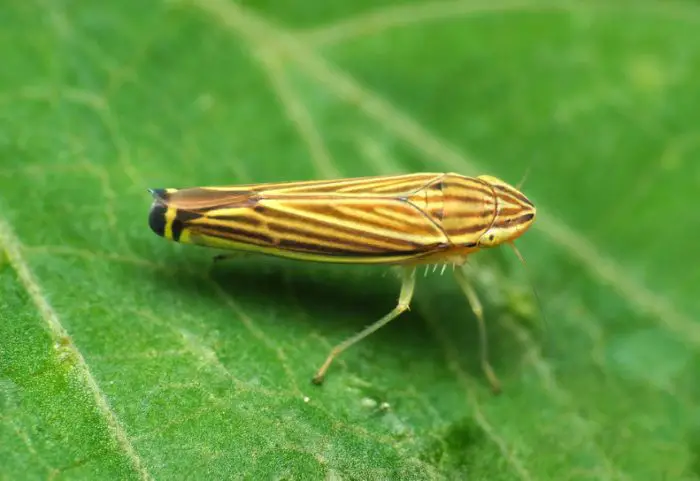
Yellow-Striped Leafhoppers (Sibovia occatoria), part of one of the world’s largest insect species, are prevalent in Central and South America. Identified by multiple yellow stripes on their wings and yellow legs, they feed on the sap of various trees and plants, particularly in countries like Ecuador.
These leafhoppers have adapted legs for jumping and are known pests on crops, potentially spreading bacteria that cause yellowing leaves. Infestations are recognizable by the discoloration of affected plants.
Yellow Flies
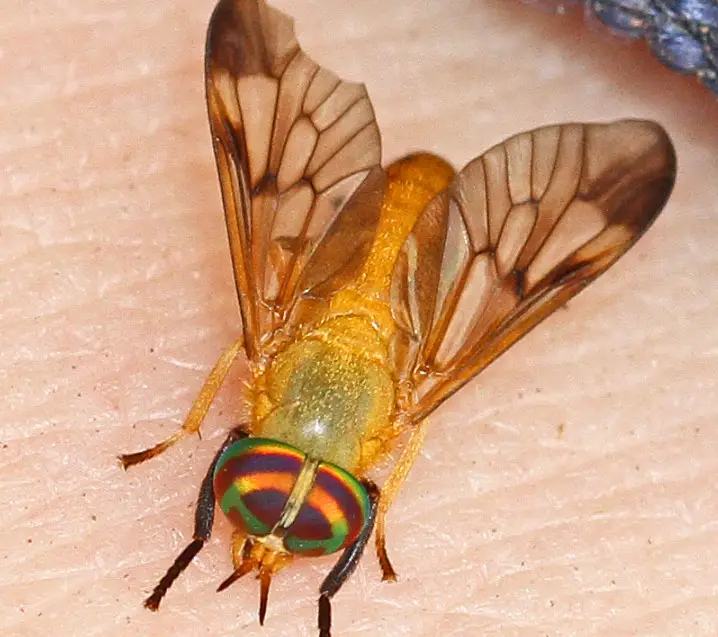
Yellow flies, specifically Diachlorus ferrugatus, are prevalent in subtropical regions like Florida, with multiple subspecies. Typically reaching 0.4 inches in size, they have a shiny dark yellow body, green head, and transparent wings.
Active in spring and summer, they feed on nectar and pollen, with females capable of biting for blood meals. Their bites are painful, causing redness, swelling, and itching. To avoid encounters, using mosquito spray before outdoor activities is advisable, as there are no specific repellents or management solutions for yellow flies.
Aphids
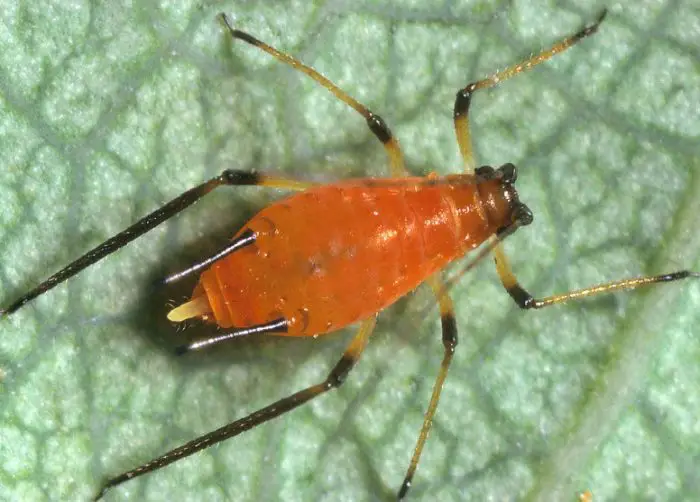
Aphids are small insects found on crops and gardens, with thousands of species. Among them, yellow aphids like the Oleander aphid (Aphis nerii) are common in North America, preferring to feed on milkweed.
While they don’t typically cause major harm to host plants, large infestations can attract ants and damage plants like milkweed, affecting butterfly and insect populations. Removing them by hand is safe and effective, as they don’t bite.
Thrips
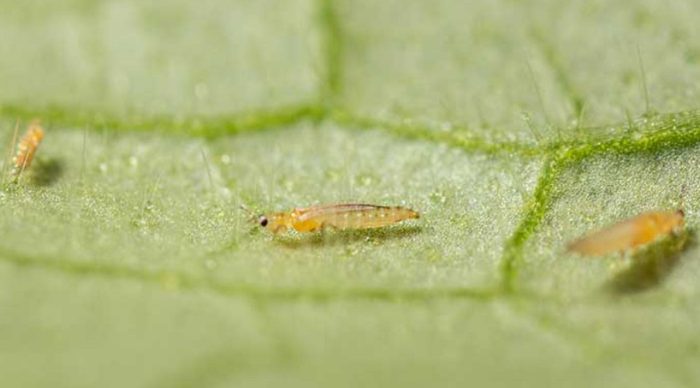
Thrips, typically brown or green, are common plant pests with elongated bodies found in gardens. Yellow thrips often infest strawberries, impacting fruit production by feeding on seeds within flower buds.
While most thrips don’t cause significant damage individually, they can collectively harm crops like strawberries. Hand removal and natural repellents like essential oils or water-vinegar solutions are effective methods to manage thrips infestations on strawberries.
Bed Bug Nymphs
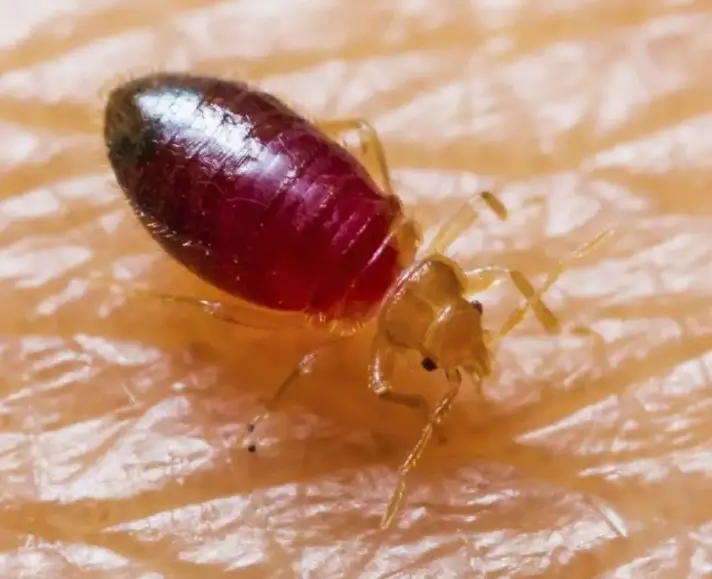
Bed bug nymphs, typically yellow, progress through five growth stages before becoming blood-feeding adults. Unfed nymphs maintain their yellow hue throughout development, while fed nymphs exhibit red coloring, though partially yellow in the cephalothorax.
Resembling seeds in size and shape, these pests infest beds and can be inadvertently transported on clothing from infested environments like hotels. While adult bed bugs are easier to spot due to their red color, nymphs, smaller and more translucent, are more challenging to detect. Their presence often indicates an infestation alongside adult bed bugs.
Chiggers
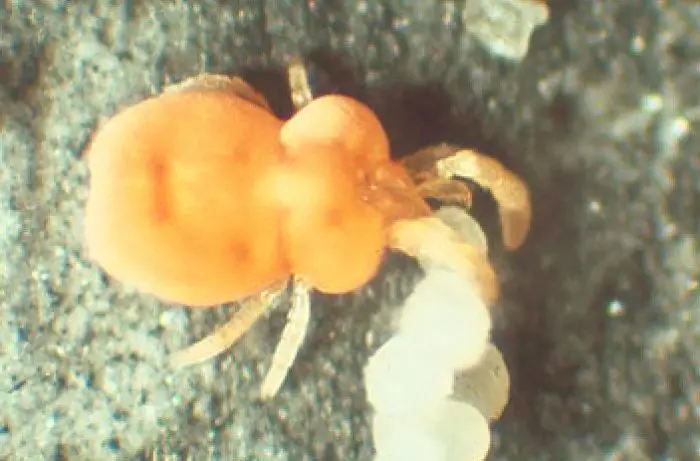
Chiggers, commonly found in spring and summer, turn yellow after feeding on human skin. They’re often seen in clusters on plants. Chigger bites cause red, itchy skin that can take days or even weeks to clear.
These pests are picked up in dense vegetation and attach to the skin, potentially leading to infections. Seeking medical attention may be necessary if complications arise from chigger bites, such as infections.
Water Mites
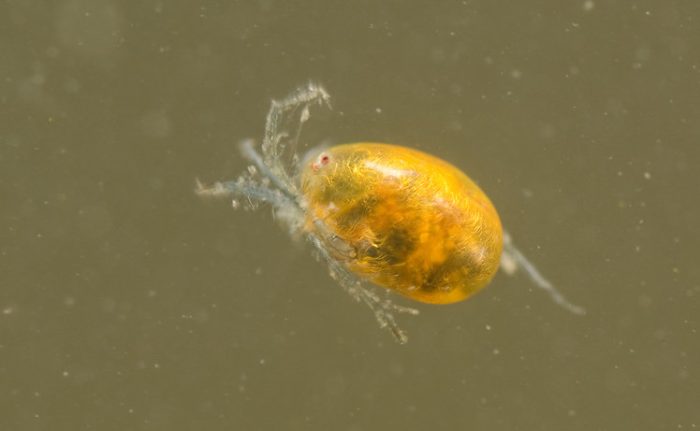
Water mites, comprising thousands of species globally, include some yellow or red-yellow varieties. Many are parasitic, attaching to hosts in water bodies like mosquitoes. While adult mites can survive outside water, their larvae are mostly aquatic. These microscopic larvae often attach to mosquitoes and other aquatic insects.
Despite limited studies, water mites are known to inhabit springs, rivers, and lakes, contributing to aquatic ecosystems with their parasitic relationships and adaptations to water environments.
Head Lice And Lice Eggs
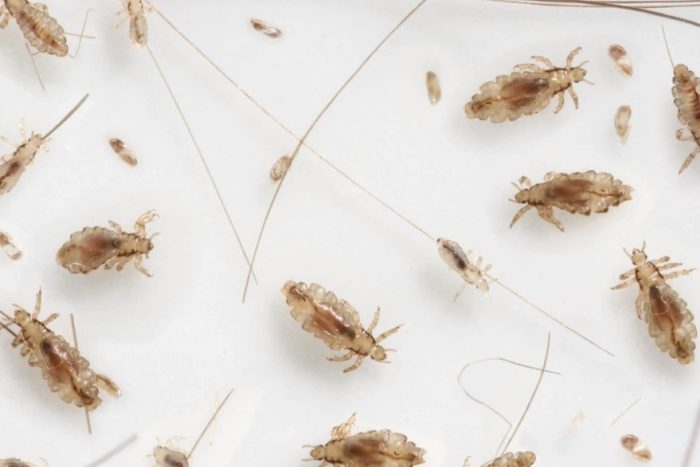
Head lice and their eggs, sometimes yellow, pose problems for children and teenagers. Measuring up to 0.3mm, they’re challenging to detect. Feeding on blood, they’re tough to eradicate despite specialized shampoos.
Treatment involves thorough washing of clothes, bedding, and cleaning rooms. A tickling sensation on the head is often the first sign of infestation, but it’s crucial to confirm lice presence, as tickling can also indicate other conditions like excessive dandruff.
Ladybugs
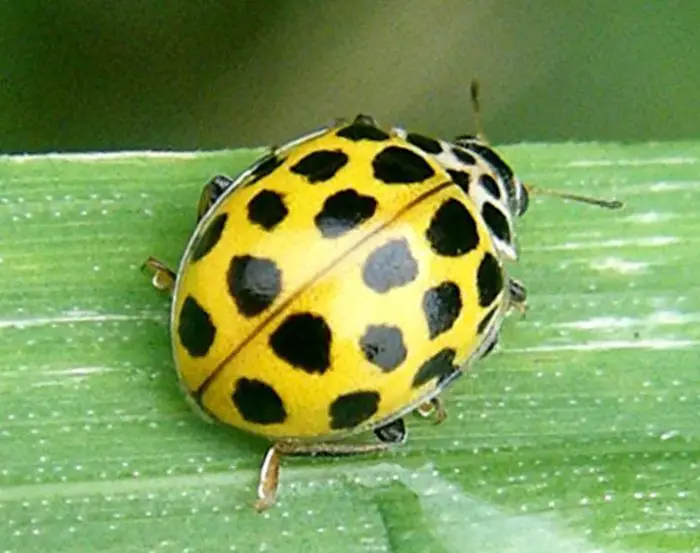
Ladybugs are typically recognized by their red color, but species like the Fourteen-Spotted Beetle and the 22-Spot Ladybug are predominantly yellow. These bugs feature dome-shaped yellow elytra similar to their red counterparts.
Found in gardens, crops, and meadows, yellow ladybugs are beneficial predators, preying on mites, aphids, and other soft-bodied insects. They remain yellow throughout most of their lives, sharing habitats and food preferences with their red counterparts.
Booklice
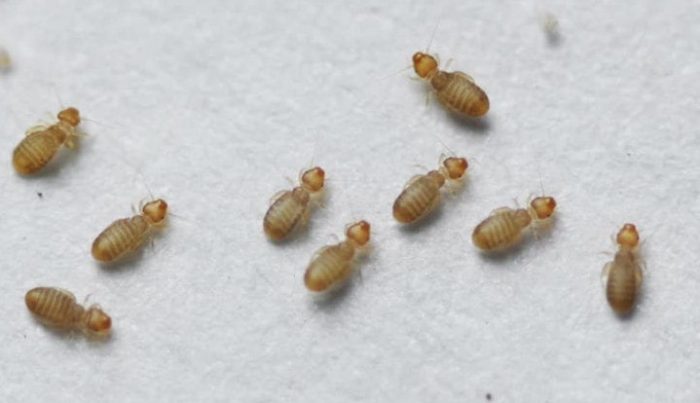
Booklice, commonly found in moldy, humid areas, come in various colors including yellowish hues. They feed on mold, books, and small insects, thriving in environments with moisture and mold. These pests damage books and multiply in moldy environments, even those with invisible mold particles.
To eliminate them, mold, fungi, and indoor humidity levels must be reduced. Booklice may retreat to areas with residual humidity, like bookshelves, where they feed on book glue. Their presence can exacerbate allergies, making eradication crucial for respiratory health.
Fleas
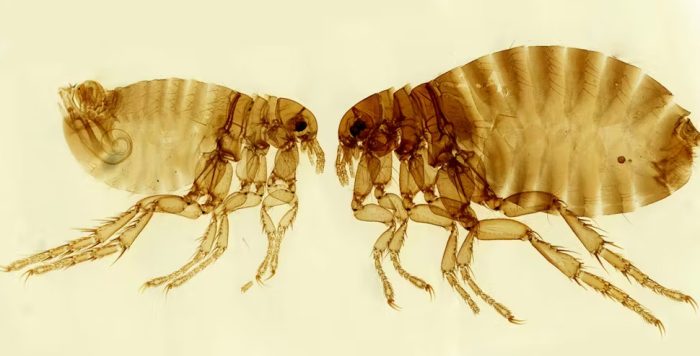
Fleas, from the Siphonaptera genus, start as yellow larvae and unfed adults. They’re small, measuring 2-3mm, and can easily go unnoticed. After a blood meal, they turn dark red or brown.
Fleas feed on hosts like pets or humans, causing skin irritation or infections. They’re contracted from nature walks, pets, or infested animals. Proper hygiene and pet care are essential for flea prevention. Without a host, fleas die off, emphasizing the importance of maintaining a flea-free environment.
Springtails
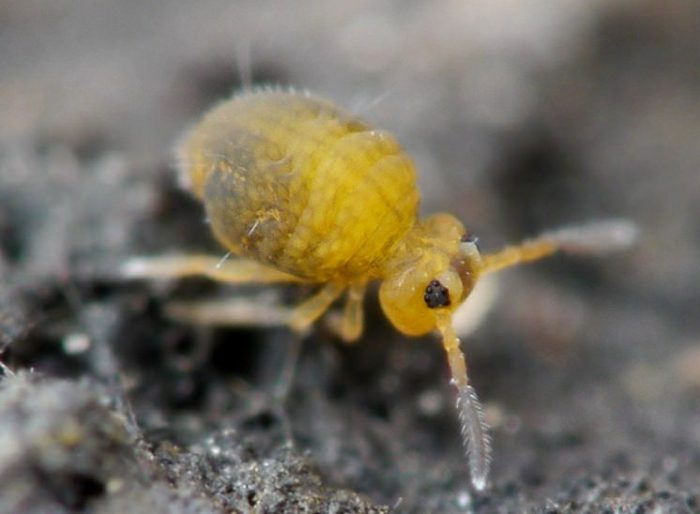
Springtails, characterized by their small, elongated yellow bodies, are commonly found indoors and in gardens. They feed on decaying organic matter like leaves and fruit.
Typically discovered under rotting wood or logs in damp environments, they don’t bite but may make their way indoors via potted plants. Springtails can attract predatory insects when present in large numbers, making proper plant care essential for managing their population indoors.
Ants
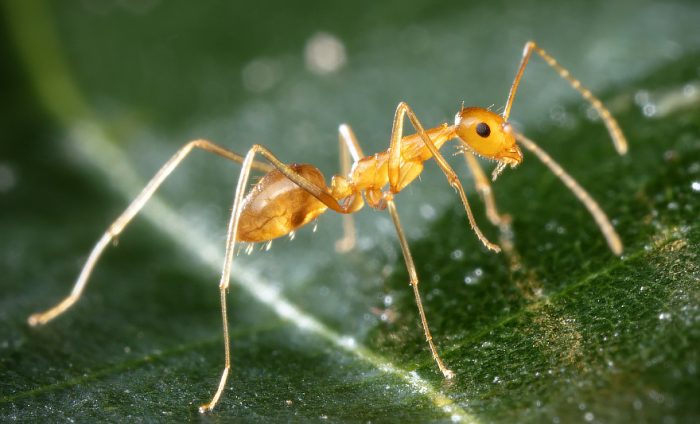
Ants are commonly red or brown, but yellow species like Yellow Crazy Ants and Yellow Meadow Ants exist in certain regions. Yellow Crazy Ants, with uncertain origins, thrive in Australia, feeding on underground insects and seeds. Yellow Meadow Ants, found in lawns, feed on aphid honeydew and are important aphid predators, benefiting lawn health.
While they have minimal impact on lawns, they play a positive role by controlling aphid populations, especially during colder months.
Termites
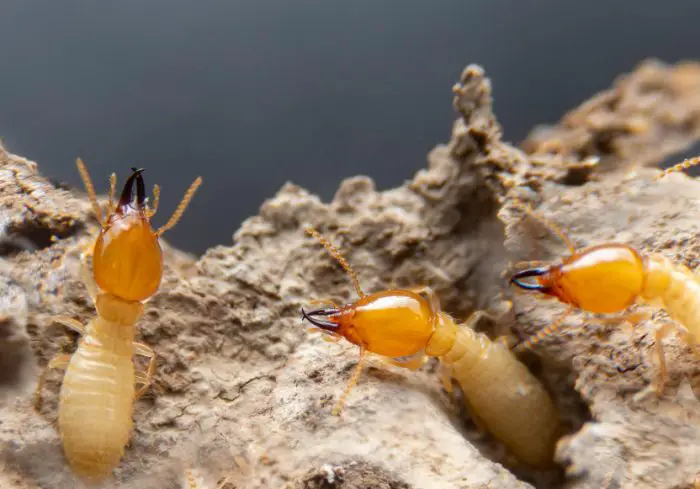
Dampwood termites, with a pale or yellow coloration, inhabit damp wood or wood exposed to water for extended periods. They come in various casts, with soldier termites growing up to 20mm long. Preferring soft, water-affected wood, they target structures built on or near water sources.
High indoor humidity or leaks create ideal conditions for termites, leading to potential infestations in old homes or rotting wood. Vigilance and addressing water issues promptly can prevent dampwood termite damage.
Stink Bug Nymphs
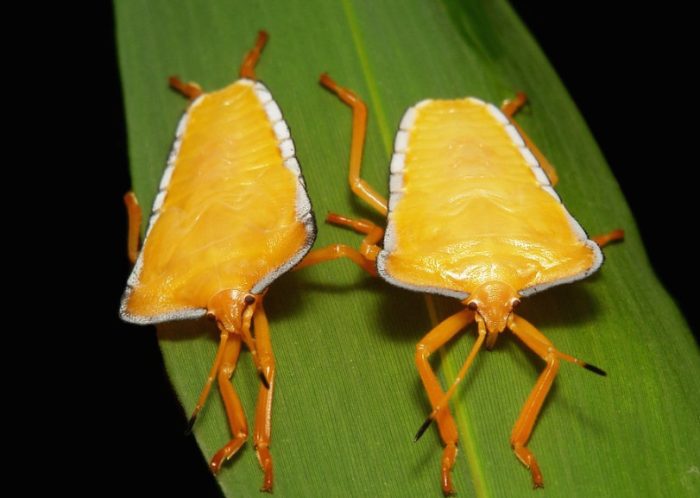
Stink Bug nymphs, initially small and yellow, are commonly found on plant leaves in North American gardens. They sport yellow and black or yellow and brown markings as they grow. Feeding on leaves and plant stems, they primarily infest apple trees and berries, as well as legumes like beans.
While their damages are generally minor, their clustered presence can hinder plant growth. Yellow nymphs undergo five instars before transitioning into adult stink bugs with altered food preferences.
Spotted Cucumber Beetle
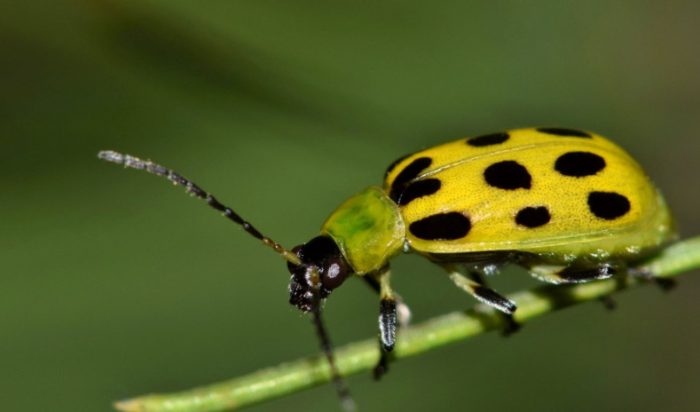
Spotted Cucumber Beetles (Diabrotica undecimpunctata) are primarily yellow with black-spotted elytra, resembling a poisonous insect. They commonly infest cucumber plants throughout North America and Mexico, starting as larvae that feed on plant roots. As adults, they consume cucumbers and flowers, causing significant damage to plants.
Other crops like squash, beans, and corn are also susceptible. Manual removal and crop rotation are traditional methods to minimize their impact on plant health.

